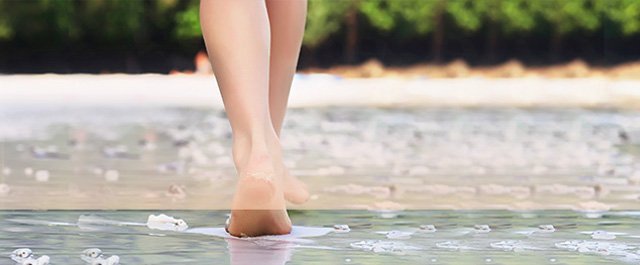Plantar Fasciitis – Pulse Publication
Plantar fasciitis otherwise commonly known as Policeman’s heel or heel spurs, is a very common problem accounting for approximately 80% of heel pains. It occurs equally in very athletic active people including the military and police forces, as well as those with more sedentary lifestyles.
Approximately 1 in 10 people will get plantar fasciitis at some pointing their life, most commonly between the ages of 40 and 60 and is twice as common in women.
It is also found in association with inflammatory arthritidies and diabetes mellitus. For these patients it can be very persistent and resistant to a lot of the common therapies.
The condition is typically due to localised inflammation of the plantar fascia, can occur anywhere from the proximal heel insertion (80%) to its distal insertion at the base of the toes.
The etiology of plantar fasciitis is poorly understood and in approximately 85% of cases remains unknown.
Known risk factors include ankle stiffness in dorsiflexion, obesity, work or activities involving prolonged weight bearing / standing and can be precipitated by changes in footwear, daily routine, athletic training or terrain.
The cause of plantar fasciitis is usually repetitive minor injuries to the fascia initially associated with inflammation but later when more established this inflammation can subside leaving a painful thickened fascia.
The diagnosis is mainly based on history, clinical examination. Investigations mainly help with differential diagnoses. The symptoms are classically stiffness and pain following periods of rest, i.e. first thing in the morning or after prolonged sitting, which then eases off after a few minutes / steps, then returns with prolonged walking or standing as a progressive pain.
Palpation of the plantar fascia on full stretch usually reveals tenderness either along the medial or lateral band, and a maximal painful focus at the proximal insertion (central / medial heel area.)
Radiographs are usually inconclusive and inevitably show calcific heel spurs, which are coincidental and anatomically deeper to the plantar fascia.
MRI or ultrasound scans usually show plantar fascial thickening +/- tissue inflammation and +/- calcaneal bone oedema at insertion.
The treatment algorithm consists of initial treatment with a 2-3 week course of anti-inflammatory medication together with the use of 1 cm heel lifts, reduction in prolonged weight bearing activities, exercises and plantar fascial massage. The exercises should consist of intrinsic foot muscle training, Achilles tendon and plantar fascia stretches both concentric and eccentric holding the stretches for 45 seconds, with 10 repetitions, 2-3 times a day. The plantar fascial massage should be undertaken with the plantar fascia at full stretch, using lubricating oils or skin moisturizer. This needs to be done for 3-5 minutes mornings and evenings.
Other treatments:
In addition to the above, there is some evidence for using customized foot-ankle splints, steroid injections (guided by either palpation or ultrasound). Other emerging techniques include PRP (platelet rich plasma) injections and extra corporeal shock wave therapy particularly for more established or resistant plantar fasciitis. Radiotherapy has also been used with some success. There is equivocal evidence for use of arch supports; nevertheless lower limb biomechanical abnormalities should be addressed with physiotherapy +/- functional foot orthotics on an individual basis.
Surgery may be considered in very difficult cases and is only advised if pain persists for more than 12 months. The procedure involves partial release of the plantar fascia, combined with neurolysis of the medial plantar branch of the tibial nerve. Surgery is also not always successful.
Plantar fasciitis on the whole has a very favourable prognosis and most people have complete recovery within 1 year.
Preventative measures include the use of appropriate footwear, weight loss regular stretching activities and the avoidance of prolonged activities on hard surfaces.
References:
- Plantar fasciitis, Clinical Knowledge summaries. February 2009
- Extra corporeal shockwave therapy for the fracture pains and fasciitis. NICE Interventional procedure guidelines, August 2009
- Plantar fascial specific stretching exercises improves outcomes in a patient with chronic plantar fasciitis, Benedict F and Judith F Baumhauer. JBJS Am 2006.

 Menu
Menu



